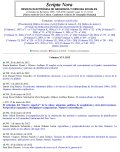Time-density: other perspective of analysis of metropolitan structures
Keywords:
polycentrism, new urban economics, metropolitan structureAbstract
In geography and urban economics characterization of polycentric metropolitan areas has been primarily based on the analysis of jobs or population density. However, employment or population are not good variables to take into account the intensity of use of urban space. This paper provides a density based on the real time spent by people in activities outside home. This density is constructed with the chain activities recorded in the Daily Mobility Survey, and the artificialized land. The research objectives are to use the time-density to identify possible sub-centers in various activities, and to look for explanatory factors that lie behind the intensity of the use of the metropolitan area. The results suggest that the time-density prioritizes as subcenters to those municipalities with better nodal conditions, specialized in directional activities, and diverse in their economic structure. The main factors that explain the intensity of use of urban space are mainly urbanistics, where the consumption of urban space per hour activity reaches its maximum efficiency in dense, diverse, compact, and well connected metropolitan places.Downloads
Issue
Section
Articles
License
Los autores que publican en esta revista están de acuerdo con los siguientes términos:
- Los autores conservan los derechos de autoría y otorgan a la revista el derecho de primera publicación, cin la obra disponible simultáneamente bajo una Licéncia de Atribución Compartir igual de Creative Commons que permite compartir la obra con terceros, siempre que estos reconozcan la autoría y la publicación inicial en esta revista.
- Los autores son libres de realizar acuerdos contractuales adicionales independientes para la distribución no exclusiva de la versió de la obra publicada en la revista (com por ejemplo la publicación en un repositorio institucional o en un libro), siempre que se reconozca la publicación inicial en esta revista.





